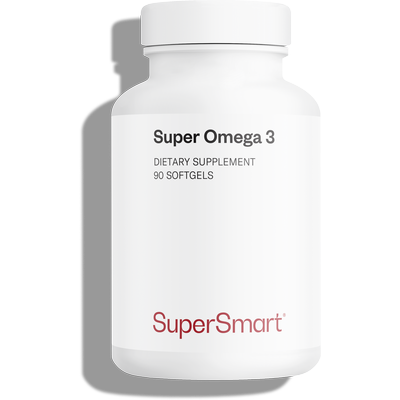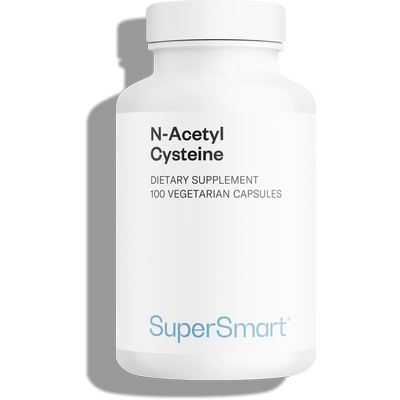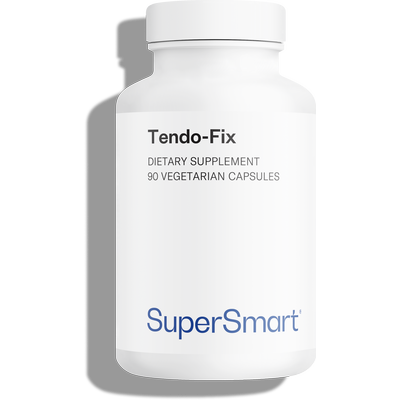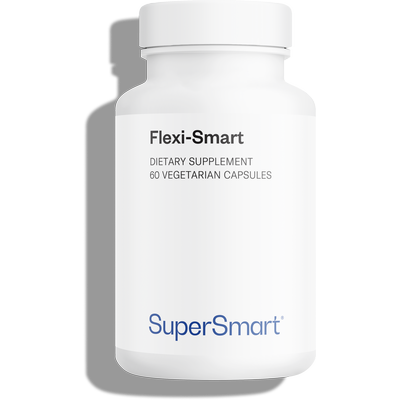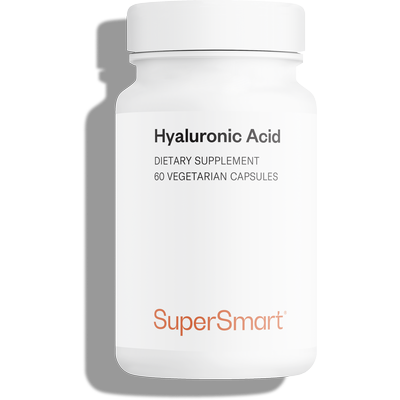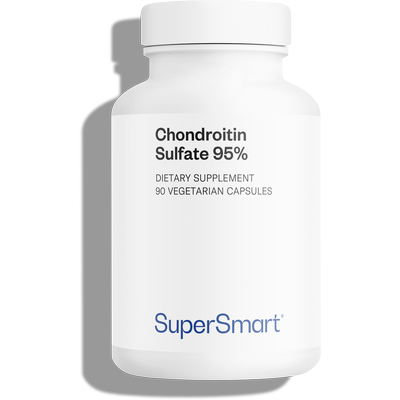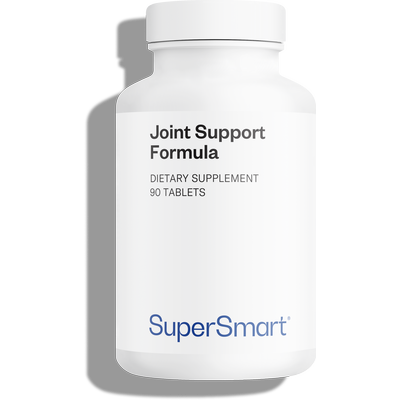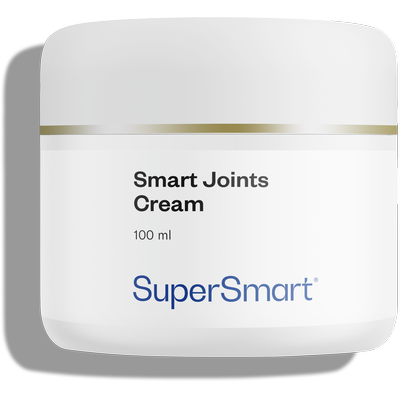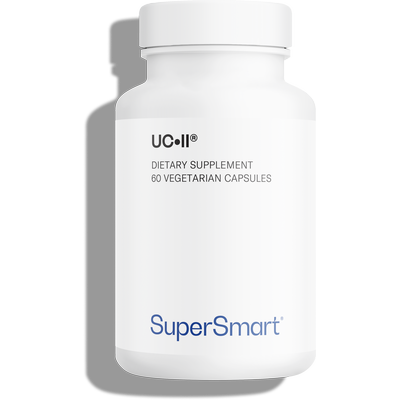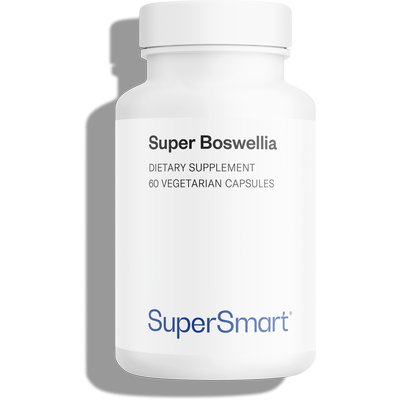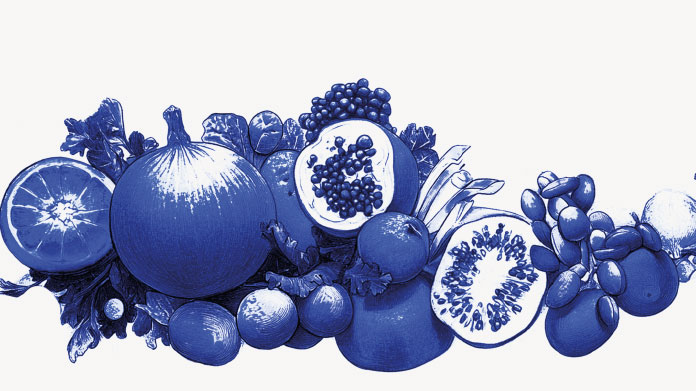In stock
Bone Health + Vitamin D3 5000
Complete your selection
What is in Bone Health + Vitamin D3 5000
Any questions?
Our team of nutrition experts and scientists has the answers.
There is still debate about which vitamin D blood levels produce benefits. The very latest evidence suggests that circulating levels in excess of 50 nmol/L, or even 75 nmol/L, may be optimal for overall health. Those below 30 nmol/L, on the other hand, are associated with adverse effects on health.
Achieving a blood concentration of 75 nmol/L often requires supplementation with at least 2000IU a day. In the same vein, taking 3000IU a day for eight weeks has been shown to result in a concentration of more than 75 nmol/L of 25(OH)D (19-20).
In 2010, more than 40 international scientists called for greater awareness among doctors of the importance of vitamin D in preventing osteoporosis and cardiovascular disease. They recommended that the entire Western population (living at middle latitudes) should supplement with 1000-2000IU, especially from October to March.
What about dietary intake?
There are very few sources of vitamin D in the diet. They are mainly restricted to animal-sourced fats, particularly those from oily fish, and fortified foods such as dairy products, and some vegetable oils and plant-based drinks.
According to the French SUVIMAX study, the diet may only provide an average of 136IU of vitamin D a day. It is thus the body’s endogenous production from UV-B which is primarily responsible for circulating levels.
Bone Health contains a blend of four plant extracts traditionally used for combatting bone loss.
Eucommia ulmoidesleaves
This is one of the most commonly prescribed natural treatments in China for treating osteoporosis (2-3). According to the theory of traditional Chinese medicine, Eucommia ulmoides (which is also called Du-Zhong in Asia) optimises the health of the kidneys which nourish and support bone tissue.
While modern science has demonstrated the anti-osteoporosis properties of Eucommia ulmoides, the mechanism of action is not yet clear. Several studies have shown that the plant’s non-steroidal polyphenolic lignans (4) behave in the same way as oestrogens. These ‘phytoestrogens’ may also bind to ‘oestrogen receptor alpha’ (5-7), potentially upregulating the activity of a number of genes central to osteoblast function (8).
It is this mechanism which may explain their ability to stimulate the phase of bone formation by osteoblasts (9) and thus increase bone mineral density, without causing any side-effects (10).
Astragalus root
Astragalus is well-known for its adaptogen properties but this traditionally used plant has other strings to its bow. With a high content of flavonoids, particularly isoflavones (11), it has been used for thousands of years to counteract osteoporosis (12).
Research has shown that it acts on two factors involved in bone remodelling (13-14):
- It increases levels of TGF-β1, a growth factor which actively supports bone formation. This factor enables the recruitment, differentiation and proliferation of osteoblasts necessary for bone formation (15-16).
- It also reduces levels of TGF-α, another growth factor that plays an important role in bone resorption and strongly promotes bone destruction by osteoclasts. After the menopause, levels of TGF-β1 fall (17), contributing to the imbalance in bone remodelling.
Scientists believe that the isoflavones in Astragalus also interact with oestrogen receptors. Like oestrogens, they increase the absorption of calcium which is vital for bone remineralisation.
Cuscuta chinensis seeds.
Cuscuta chinensis is a parasitic plant that has been used in traditional medicine for thousands of years for supporting bone function. It is also known as Dodder and Tu-Si-Zi. Its mechanism of action appears to be very similar to that of Astragalus: Cuscuta chinensis also contains a number of flavonoids (18), the most active of which are kaempferol, quercetin, hyperoside, astragalin and lignans (19).
Studies show it supports osteoblast differentiation and proliferation while inhibiting osteoclast activity (20-21).
Extract of Rehmannia root
Rehmannia glutinosa is an edible plant commonly known as Dihuang, used for at least 3000 years in traditional medicine. Modern research has revealed the presence of numerous bioactive compounds including flavonoids and monoterpenoids (22). Catalpol appears to be the most effective of the monoterpenoids (23) for supporting bone function, though the precise mechanism has yet to be established.
As vitamin D is fat-soluble, the body is able to store it in fats when intake exceeds requirements.
In theory, therefore, you could take mega-doses of vitamin D (100,000-500,000IU) each month or even each year. However, it has been demonstrated that daily ingestion is closer to what our bodies naturally prefer. High doses of vitamin D are also linked with several adverse effects, such as an increased risk of falls and fractures, respiratory infections (28), and hypercalcaemia (too much calcium in the blood, producing symptoms such as constipation) as well as a fall in the natural production of melatonin (a mediator of sleep).
It’s, therefore, better to opt for a supplement like VitaminD3 5000IU which can be taken every day (5000IU a day), every other day (2500IU a day), twice a week (around 1400IU a day) or weekly (around 700IU a day).
No. Spending long periods in the sun will not increase your vitamin D levels beyond a certain limit. Excessive exposure to the sun degrades pre-vitamin D3 (which is converted into D3 in the skin) and vitamin D3 itself. Lengthy sun exposure over the summer will therefore not be enough to maintain adequate levels over the winter months.
Research has demonstrated the presence of vitamin D hormone receptors (VDRs) in neurons and glial cells in the hippocampus, hypothalamus, cortex and subcortex, all areas of the brain involved in cognitive function (29).
In binding to these receptors, vitamin D triggers mechanisms which protect against the processes involved in neurocognitive problems (30). Vitamin D also exerts an antiatrophic effect by controlling the production of neurotrophic agents such as Nerve Growth Factor (NGF) and Glial cell line-Derived Neurotrophic Factor (GDNF) (31).
These properties may explain why low vitamin D levels in older people have been associated with cognitive problems (32-33).
The cohort analysis InCHIANTI established a link between hypovitaminosis D and cognitive problems, and showed that elderly people lacking in vitamin D (< 25 nmol/L) had a significantly increased risk of overall cognitive decline compared to those with higher levels (> 75 nmol/L) (35). This finding has been confirmed by other prospective studies, particularly the analysis of the MrOS (36) and SOF (37) cohorts.
This product’s softgels are of bovine origin. They are particularly suitable for supplements that require rapid solubility. Made from high-quality bovine gelatine, they are safe and effective.
Primarily linked to ageing, osteoporosis is a natural process characterised by a decrease in bone mass and bone density. It makes bones more ‘porous’ and vulnerable to fractures from even simple falls. As bone loss does not normally produce any symptoms prior to a fracture, it is known as ‘the silent disease’. But why does this bone loss occur?
Our bones undergo constant remodelling throughout life via a two-fold process:
- A resorption phase during which specialised cells called ‘osteoclasts’ eat away at existing bone structures. This leads to the development of holes in the bones (called Howship lacunae).
- A new formation phase during which other specialised cells called ‘osteoblasts’ make new bone structures to compensate for the ‘holes’ and restore bones to a healthy state. Minerals then accumulate in the new matrix to optimise the bones’ mechanical resistance.
This dual process allows the body to be in constant harmony with its environment. In this way, damaged bones are quickly rebuilt and the body is even able to make stronger bones if environmental factors change (such as when we engage in a new physical activity). However, it’s important that this two-fold process remains in balance: if the resorption phase gains the upper hand, the ‘holes’ are never filled in and bones become dangerously fragile. This is exactly what happens in osteoporosis.
A number of factors affect the balance of this bone remodelling (1):
- Sex hormones. Oestrogens are the main regulators of bone tissue remodelling. They target osteoblasts and are powerful inhibitors of bone resorption by osteoclasts. The fall in oestrogen caused by the menopause leads to an enduring imbalance in bone renewal: gains start to be outweighed by losses and osteoporosis develops rapidly.
- Mechanical constraints. Bones are able to adapt according to the level of physical restraint to which they’re subjected. When you suddenly stop exercising, following an injury for example, physical stimulation stops, which increases the resorption phase and reduces the rebuilding phase. Physical inactivity is therefore a cause of osteoporosis over the long term.
- Bone Morphogenetic Proteins (BMPs). These are proteins which promote the bone formation phase.
- Insulin Growth Factors (IGFs). These stimulate osteoblast activity.
- Transforming Growth Factor (TGF). This is a group of messengers that significantly influence the two phases of bone remodelling.
- Vitamin D. This vitamin plays an essential role in bone renewal: it stimulates intestinal absorption of calcium and phosphate (which are used to mineralise new bones) and inhibits parathormone, a protein that stimulates bone resorption.
Vitamin D3 5000 UI is an exceptional supplement that you can choose to buy for at least three main advantages:
- It contains vitamin D3, which is more effective than the vitamin D2 form found in plant-sourced products (23). The two forms were long thought to be equivalent but recent trials have shown this is not the case.
- It offers a powerful dose of 5000IU per supplement. It is designed to be taken every day (in which case it’s best to check your 25-hydroxyvitamin D status), twice-weekly, or weekly. Several studies have confirmed supplementation with 1000-10,000IU a day to be effective (24-27).
- It comes in the form of softgels and contains sunflower oil to maximise the absorption of the vitamin D. Comparative studies have shown that this form is better absorbed than the dry form and that it produced a more significant increase in 25(OH)D levels.
For significant long-term effects, supplementation should continue for a period of several months, at a dose of two capsules a day.
A number of additional measures can be taken:
- Supplementation with vitamin D, with calcium, or with other relevant substances available to buy at Supersmart (BMPs…).
- Frequent exposure to sunlight.
- Reducing consumption of caffeinated drinks (as they encourage calcium loss and thus the bone resorption phase).
- Taking up, or returning to, regular exercise (at an appropriate level for your physical condition).
The blend is very well-tolerated and is completely non-toxic.
Those over 50 are still able to produce vitamin D from the sun’s rays but for several reasons, production is less effective, and levels of circulating vitamin D tend to be lower.
Vitamin D3 5000IU should be taken alongside the meal of the day with the highest fat content. Doing so will increase the supplementation’s efficacy by 30%-60%. Fats encourage bile secretion which increases the absorption of vitamin D.
You can check how effective Vitamin D 5000IU is by asking your doctor for a 25-hydroxyvitamin D test (40) before and after supplementation. It’s the best biomarker of vitamin D (41).
This product’s capsules are composed of HPMC (hydroxypropyl methylcellulose), a plant substance derived from cellulose. HPMC is widely used for medicines and dietary supplements. It contains no animal ingredients, is recognised as safe by health authorities and is considered more sustainable than synthetic alternatives.
Need help?
You may also like


